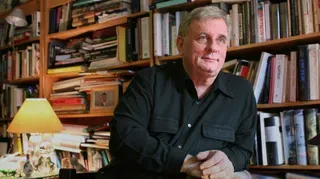August 10, 2008
AIDS Quilt: 20 years after Navy Pier
Michael Wood READ TIME: 2 MIN.
It was a steamy, hot July morning-one for the record books-in Chicago of 1988. The location chosen was under two rusty, water-damaged sheds at the old Navy Pier. Volunteers, dressed in stark white uniforms, worked for months to prepare for the four-day event, said Lori Cannon, who remembers the extensive care she and the steering committee took in protecting the anticipated display.
The decaying sheds at the old pier were transformed that weekend, given new life, Cannon recalls, from almost being torn down and forgotten.
"It became a remarkable cemetery," she said.
Last month marked the 20th anniversary of what would become the largest display of intricately sewn quilt panels, each commemorating a life lost to AIDS. Cannon, who helped organize the historic display with the NAMES Project Foundation's Chicago Chapter, said she scheduled various readers-from clergy members and Rabbis to mothers and athletes-to recite the names on each of the 12-foot-square panels of colorful fabric.
"It had been an insightful weekend, a challenging weekend, but mostly it had been a beautiful weekend," said Cannon, who describes herself as an old lion of the LGBT community. "There is nothing more powerful than approaching a panel ... they are all reminders, they are all very important, they are a national treasure."
Modesto "Tico" Valle, the current executive director of the Center on Halsted, recalls his position 20 years ago, as chair of the NAMES' educational outreach program.
It was humbling for people to hand over panels they created to commemorate a loved one to the NAMES Foundation for safe-keeping, Valle said, and it was rewarding to be able to soften hearts and educate people on the devastation of the epidemic.
"It was very emotional because it was the beginning of the epidemic," Valle said. "From that came the birth of many organizations such as Open Hand and Chicago House-It was eye-awakening, people really wanted to get involved and make a difference."
Twenty years later, it seems, a new generation of younger people who grew up viewing AIDS as a manageable disease are not aware of the quilt's significance until they stand at the foot of the panels, Valle said.
"For many of us who survived that battle, the quilt has been very powerful to us," he said. "There is a generation that didn't grow up with it basically. But today, if you take the quilt into schools, it still inspires, motivates and moves [ young ] people into action."
Valle said the Center on Halsted hosts panel displays of the quilt on World AIDS Day and National HIV Testing Day and that there are currently quilt displays throughout Illinois through school initiatives.
The NAMES Project Foundation's Chicago Chapter, 2855 N. Lincoln, offers seamstresses and quilting workshops by request to assist in creating quilt panels, said Cannon.
"There is never a time limit for making a panel for a loved one," Cannon said. "Whenever a person feels they're ready ... the quilt is there however you want it to comfort you."
To find out more about the AIDS Memorial Quilt, see www.aidsquilt.org .
Michael Wood is a contributor and Editorial Assistant for EDGE Publications.







